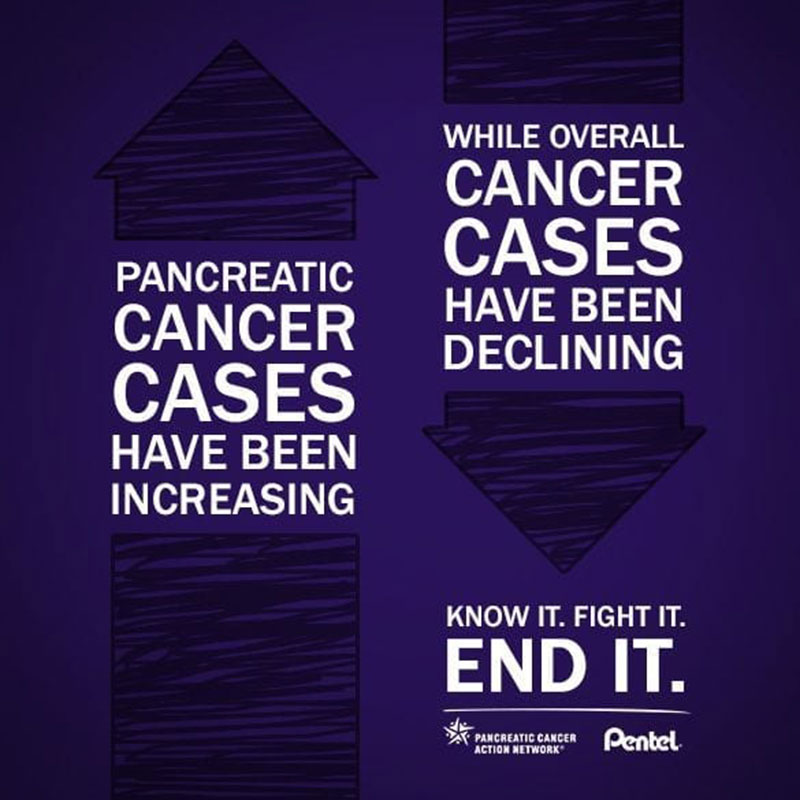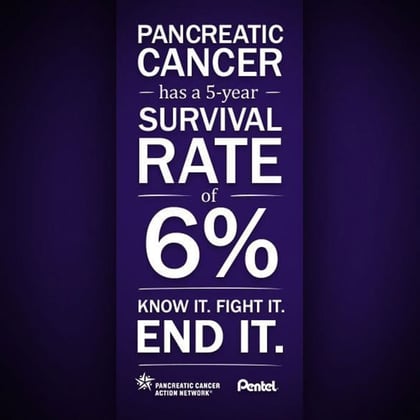Today is the first annual World Pancreatic Cancer Awareness Day, a day when people around the globe will wear purple clothing, purple ribbons and spread information about one of the most deadly cancers, one of the fourth leading causes of cancer-related death in the USA.
The UMHS Endevour takes a brief look at the day, facts about pancreatic cancer and what the general public and students at American and Caribbean medical schools can do to get involved today, all of November (which is National Pancreatic Cancer Awareness Month) and year round.
Facts About Pancreatic Cancer
Following are facts about the disease from the Pancreatic Cancer Action Network.
- "Pancreatic cancer is currently the fourth leading cause of cancer-related death in the United States, and is anticipated to become the second by 2020."
- "Only 6 percent of Americans diagnosed with pancreatic cancer survive more than five years."
- "An estimated 73 percent of Americans (46,000 people) will die within the first year of diagnosis."
Wage Hope: Purple for a Purpose to Fight Pancreatic Cancer
Wage Hope is the name of the public campaign started by the Pancreatic Cancer Action Network for November. The organization’s goal is to double pancreatic cancer survival rates by 2020 by doing the following: funding scientific and medical research, getting federal support, providing support for individuals and families affected by the disease, and raising awareness.

GET INVOLVED: 73% of people diagnosed with pancreatic cancer die within 1 year. Volunteer to help stop this killer. Photo: Pancreatic Cancer Action Network
“We need more Americans to get involved in the pancreatic cancer movement, especially during National Pancreatic Cancer Awareness month, by encouraging more people to take action in fighting this disease,” said Julie Fleshman, president and CEO of the Pancreatic Cancer Action Network, in a press statement. “This November, we are excited to launch Wage Hope – our new rallying cry, a relentless call to action to keep fighting for those battling pancreatic cancer, no matter what it takes. It means we never surrender in our pursuit to accelerate scientific progress and change patient outcomes.”
The Function of the Pancreas
Here are some quick facts about the pancreas from the Pancreatic Cancer Action Network's website.
- "The pancreas is a gland, about six inches long, located in the abdomen. It is shaped like a flat pear and is surrounded by the stomach, small intestine, liver, spleen and gallbladder."
- "The pancreas is both an exocrine gland and endocrine gland. Exocrine cells of the pancreas produce enzymes that help with digestion. When food enters the stomach, exocrine cells release the pancreatic enzymes into a system of small ducts that lead to the main pancreatic duct."
- "The endocrine cells of the pancreas produce hormones. Hormones are substances that control or regulate specific functions in the body. They are usually made in one part of the body and carried through the blood to take action on another part of the body. The two main pancreatic hormones are insulin and glucagon."
Why Is Pancreatic Cancer So Deadly?
Pancreatic cancer is often discovered in the later stages and quickly spreads to other organs. Some of the symptoms include:
Jaundice
Weight loss
Pain
Digestive difficulties
Changes in stools
Blood clots
Diabetes
Ascites
Neuroendocrine tumors
Students at American and Caribbean medical schools can help fight pancreatic cancer by joining local volunteer efforts. For more information, visit www.pancan.org/
(Top image) Courtesy of Pancreatic Cancer Action Network
About UMHS:
Built in the tradition of the best US universities, the University of Medicine and Health Sciencesfocuses on individual student attention, maintaining small class sizes and recruiting high-quality faculty. We call this unique approach, “personalized medical education,” and it’s what has led to our unprecedented 96% student retention rate, and outstanding residency placements across the US and Canada. UMHS is challenging everything you thought you knew about Caribbean medical schools.

Scott is Director of Digital Content & Alumni Communications Liaison at UMHS and editor of the UMHS Endeavour blog. When he's not writing about UMHS students, faculty, events, public health, alumni and UMHS research, he writes and edits Broadway theater reviews for a website he publishes in New York City, StageZine.com.















